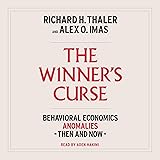Navigating the dynamic world of gold prices often presents a significant challenge for many individuals. Daily fluctuations make it difficult to ascertain the true value of your investment or prospective purchase. This article, complementing the detailed figures presented in the video above, aims to demystify the intricacies of the gold price today in India, providing a comprehensive understanding of what drives these rates and how you can make informed decisions.
Understanding Today’s Gold Price in India for 17th September 2025
The video clearly outlined the specific gold rate today, for 17th September 2025, across various purities and weights. It is crucial to remember that these rates are indicative and can vary slightly based on location within India and specific vendors. Here is a precise breakdown for your reference:
22 Carat Gold Rate Today
Often preferred for jewelry due to its durability, 22 carat gold blends 91.6% pure gold with other metals. The rates for this popular option on the specified date were:
- 1 gram: ₹10,240
- 8 grams: ₹81,920
- 10 grams: ₹1,02,400
- 100 grams: ₹10,24,000
24 Carat Gold Rate Today
Representing the purest form of gold, 24 carat gold is 99.9% pure. This type of gold is primarily chosen for investment purposes rather than intricate jewelry. On 17th September 2025, the rates for this benchmark purity were:
- 1 gram: ₹11,171
- 8 grams: ₹89,368
- 10 grams: ₹1,11,710
- 100 grams: ₹11,17,100
18 Carat Gold Rate Today
Possessing 75% pure gold, 18 carat gold is known for its strength and suitability for diamond-studded jewelry and intricate designs. The rates for 18 carat gold on this specific date were:
- 1 gram: ₹8,378
- 8 grams: ₹67,024
- 10 grams: ₹83,780
- 100 grams: ₹8,37,800
These figures provide a snapshot of the market, helping individuals to calculate their potential expenditure or returns effectively. Understanding the distinction between these carats is fundamental for any gold transaction.
Decoding Gold Carats: Purity Explained for Buyers
The term ‘carat’ fundamentally refers to the purity of gold. Higher caratage indicates a greater proportion of pure gold in an alloy. Understanding this concept is absolutely essential for anyone buying or selling gold.
What is 24 Carat Gold?
24K gold signifies 99.9% pure gold, making it the highest standard of purity available. It features a bright yellow color and is exceptionally soft, which prevents its use in everyday jewelry. Consequently, 24K gold primarily functions as an investment vehicle, stored in forms like coins, bars, or digital gold. Imagine if you wanted to hold the purest form of wealth; 24K gold would be your prime choice.
Exploring 22 Carat Gold
22K gold contains 91.6% pure gold, with the remaining 8.4% comprising metals like copper, silver, or zinc. Jewelers add these metals to increase the gold’s durability and make it suitable for crafting intricate designs. This enhanced strength prevents damage during daily wear, making 22K gold the preferred choice for traditional Indian jewelry. For instance, consider a beautiful wedding necklace; it will almost certainly be crafted from 22K gold for both its appeal and resilience.
Understanding 18 Carat Gold
18K gold contains 75% pure gold, blended with 25% other metals. This higher proportion of alloys results in even greater strength and durability. Jewelers often use 18K gold for diamond jewelry and other pieces requiring a robust setting. Its reduced purity also makes it more affordable compared to 22K or 24K gold. Hypothetically, if you are selecting a ring with delicate gemstones, 18K gold offers the necessary robustness to secure them safely.
Key Factors Influencing Gold Rates in India
The gold rate today does not simply appear; it is a complex interplay of numerous global and domestic factors. Consequently, gold prices fluctuate constantly, reflecting changes in these underlying elements. Awareness of these factors can empower consumers and investors.
Global Economic Indicators
International gold prices are heavily influenced by global economic health, inflation rates, and interest rate policies. When global economies face uncertainty or potential recessions, investors often flock to gold as a ‘safe-haven’ asset, driving its price upwards. Furthermore, a weaker US dollar typically makes gold more affordable for international buyers, increasing demand and pushing prices higher.
Geopolitical Events
Wars, political instability, and international crises significantly impact gold prices. Investors generally view gold as a reliable store of value during times of turmoil, seeking refuge from volatile stock markets. For example, major global conflicts can lead to immediate spikes in the gold price today in India as well as worldwide.
Demand and Supply Dynamics
The fundamental economic principle of supply and demand plays a crucial role. High demand, especially from major consuming nations like India and China, coupled with limited new mine supply, invariably pushes gold prices higher. Conversely, an oversupply or reduced demand can lead to price drops.
Rupee-Dollar Exchange Rate
Since India imports a significant portion of its gold, the exchange rate between the Indian Rupee (INR) and the US Dollar (USD) directly affects local prices. A weaker Rupee makes gold imports more expensive in INR terms, thereby increasing the gold rate today in India. Conversely, a stronger Rupee can lead to lower domestic gold prices.
Government Policies and Import Duties
The Indian government’s policies, particularly import duties on gold, exert a direct influence on domestic prices. Higher import duties mean jewelers and importers pay more, which then translates into elevated consumer prices. Therefore, any changes in these duties are closely monitored by the market.
Festive and Wedding Seasons
India’s cultural affinity for gold means that demand typically surges during major festivals like Diwali, Akshaya Tritiya, and the extensive wedding season. This seasonal demand often leads to temporary price increases. Imagine the collective purchasing power during these periods; it profoundly affects market rates.
Why Gold Prices Fluctuate Daily
The daily fluctuation in the gold rate today is a direct consequence of the constant interplay of these global and local factors. Gold is traded on international exchanges almost continuously, reacting to news, economic data releases, and shifts in investor sentiment. These reactions are then reflected in the domestic market, adjusted for local conditions and currency exchange rates. Consequently, remaining updated with daily price movements becomes essential for buyers and sellers alike.
Practical Tips for Buying Gold in India
Purchasing gold requires careful consideration, especially given its significant value. Adhering to certain best practices can protect your investment and ensure you receive genuine quality.
Firstly, always check the purity and hallmark of the gold. The Bureau of Indian Standards (BIS) hallmarking certifies the purity of gold jewelry, offering peace of mind. Secondly, understand the components of the final price, which typically include the gold rate, making charges, and taxes. Negotiating making charges can sometimes lead to savings. Furthermore, consider buying gold during periods of lower demand, perhaps outside of peak festival seasons, to potentially secure better prices. Moreover, always request a detailed invoice for your purchase.
Gold as an Investment in India
For centuries, gold has served as a revered investment in India, recognized for its ability to preserve wealth and act as a hedge against inflation. People view gold as a tangible asset that can be passed down through generations. Historically, gold has often delivered stable returns during economic downturns, cementing its reputation as a safe-haven asset.
Forms of Gold Investment
- Physical Gold: This includes gold jewelry, coins, and bars. It offers tangible ownership but comes with storage and security concerns.
- Gold ETFs (Exchange Traded Funds): These are funds that invest in 99.5% pure gold. You can buy and sell units of Gold ETFs on stock exchanges, offering liquidity and eliminating storage worries.
- Sovereign Gold Bonds (SGBs): Issued by the Reserve Bank of India on behalf of the government, SGBs are denominated in grams of gold. They offer an annual interest payment and are redeemed at the market price of gold upon maturity, providing both capital appreciation and income without the need for physical storage.
- Digital Gold: Various platforms now offer the option to buy and sell gold digitally, with the physical gold stored in insured vaults. This provides convenience and flexibility for smaller investments.
The choice of investment form depends on individual preferences for liquidity, storage, and direct ownership. Each option offers distinct advantages for investors aiming to benefit from the ever-changing gold price today in India.











